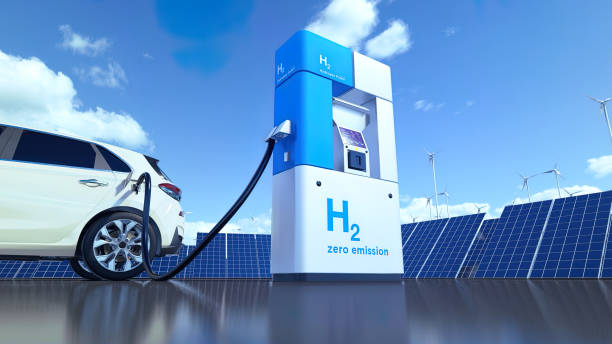"Diving into the World of Hydrogen Fuel Cell Vehicles"
The future of automotive transport is whispering its name, hydrogen. This lightest and most abundant element in the universe is making its mark on the automotive industry in the form of hydrogen fuel cell vehicles. Buckle up, as we delve into the depths of this evolving technology, its historical context, and its potential impact on the future of driving.

A Journey Through Time: The Genesis of Hydrogen Fuel Cells
The concept of hydrogen as a source of power dates back to the early 19th century. Sir William Robert Grove, a British scientist, developed the first fuel cell in 1839. However, it was not until the mid-20th century that the practical application of hydrogen fuel cell technology began to gain traction.
In the 1960s, NASA implemented hydrogen fuel cells in the Apollo space program, suggesting the potential of this technology for terrestrial transport. Fast forward to the 21st century, and we now have automotive giants like Toyota and Honda launching their own hydrogen fuel cell vehicles, signaling a new era in environmentally friendly transportation.
The Hydrogen Wave: Current Trends and Insights
Hydrogen fuel cell vehicles are emerging as a promising alternative to traditional internal combustion engines and even to electric vehicles. They offer the potential for zero-emission driving, with their only byproduct being water vapor.
The global market for hydrogen fuel cell vehicles is projected to reach $42 billion by 2026, according to a report by Global Markets Insights. This growth is driven by increasing environmental awareness, government incentives for green technologies, and advancements in fuel cell technology.
The Nuts and Bolts: How Hydrogen Fuel Cell Vehicles Work
Hydrogen fuel cell vehicles operate on a simple principle: the chemical reaction between hydrogen and oxygen. A fuel cell combines hydrogen and oxygen to produce electricity, which powers the vehicle’s motor. The only byproduct of this process is water, making it a clean and sustainable form of energy.
These vehicles also offer the advantage of quick refueling times and longer driving ranges compared to electric vehicles, making them a more practical alternative for long-distance driving.
The Road Ahead: Impact, Benefits, and Challenges
The adoption of hydrogen fuel cell vehicles could significantly reduce carbon emissions and our dependence on fossil fuels, offering a viable solution to the pressing issue of climate change. They also promise high energy efficiency and performance, providing a smooth and quiet ride that many drivers appreciate.
However, there are also challenges to overcome. The infrastructure for hydrogen refueling stations is still limited, making these vehicles less feasible for everyday use in many areas. Additionally, the process of producing hydrogen can be energy-intensive and often relies on natural gas, which somewhat undermines the technology’s green credentials.
Navigating the Hydrogen Highway
The journey towards a sustainable automotive future is complex and filled with uncertainties. Yet, hydrogen fuel cell vehicles offer a promising path forward. As technology advances and infrastructure improves, these vehicles may soon become a common sight on our roads, ushering in a new era of eco-friendly transport. This journey is just beginning, and the destination is decidedly worth the ride.




